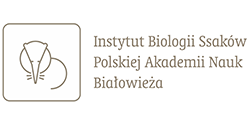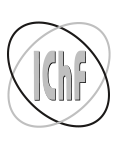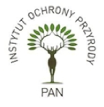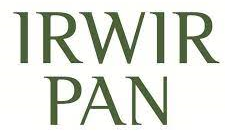- Search in all Repository
- Literature and maps
- Archeology
- Mills database
- Natural sciences
Advanced search
Advanced search
Advanced search
Advanced search
Advanced search

Object
Title: Rozwiązania oparte na przyrodzie jako pole badawcze integrujące geografię = Nature-based Solutions as a research field integrating geography
Subtitle:
Przegląd Geograficzny T. 96 z. 4 (2024)
Publisher:
Place of publishing:
Description:
Abstract:
The article’s main aim was to systemize the assumptions of the Nature-based Solutions (NbS) concept and to justify treating it as a research field integrating geographical sciences. The article is based on a literature review, and the findings presented therein are based on a content analysis of the 92 publications. As part of the research procedure, a review of the existing definitions of NbS was made and current proposals for their specification were presented. On this basis, a synthetic list of the most important aspects included in the NbS concept was proposed. Its systematisation allowed to identify a research gap - the lack of a satisfactory description of the systemic approach, which is treated as a key principle in this concept simultaneously. The comprehensiveness of the NbS assumptions makes it fit very well into the interdisciplinary scope of geographical research on the relations within the system: human-natural environment. The article identifies a number of links between NbS and geography, both holistic and more specific ones. The integrative nature of the NbS concept was confirmed in the context of the geographical sciences. Future directions of geographical research that could contribute to the development of the NbS concept were also formulated.
References:
Al Sayah, M.J.., Versini, P.-A., & Schertzer, D. (2022). H2020 projects and EU research needs for Nature-Based adaptation Solutions. Urban Climate, 44, 101229.
![]()
Bański, J. (2002). Geografia wsi – nowa dyscyplina badawcza polskiej geografii. Przegląd Geograficzny, 74(3), 367-379.
Bartkowski, T. (1986). Zastosowania geografii fizycznej. Państwowe Wydawnictwo Naukowe, Warszawa.
Bąkowska-Waldmann, E. (2023). Residents’ Experiential Knowledge and Its Importance for Decision-Making Processes in Spatial Planning: A PPGIS Based Study. ISPRS International Journal of Geo-Information, 12(3), 102. https://doi.org/10.3390/ijgi12030102
Beckerman, W. (1994). ‘Sustainable Development’: Is it a Useful Concept? Environmental Values, 3(3), 191-209.
![]()
Bockarjova, M., Botzen, W.J.W., Bulkeley, H.A., & Toxopeus, H. (2022). Estimating the social value of nature‑based solutions in European cities. Scientific Reports, 12, 19833. https://doi.org/10.1038/s41598-022-23983-3
Borys, T. (2011). Zrównoważony rozwój – jak rozpoznać ład zintegrowany. Problemy Ekorozwoju – Problems of Sustainable Development, 6(2), 75-81.
Brears, R.C. (2020). Nature-Based Solutions to 21st Century Challenges. Earthscan, Routledge Taylor & Francis Group, London and New York. https://doi.org/10.4324/9780429294600
Brown, D. R. (2001). Towards a common future. Nature, 413, 675-676. https://doi.org/10.1038/35099612
![]()
Chojnicki, Z. (1989). Koncepcja terytorialnego systemu społecznego. Przegląd Geograficzny, 60(3), 491-510.
Chojnicki, Z. (1996). Geografia społeczno-ekonomiczna wobec transformacji systemowej w Polsce. Przegląd Geograficzny, 68(1-2), 19-29.
Cohen-Shacham, E., Walters, G., Janzen, C., & Maginnis, S. (red.). (2016). Nature-based Solutions to address global societal challenges. IUCN, Gland. http://dx.doi.org/10.2305/IUCN.CH.2016.13.en
Cohen-Shacham, E., Andradea, A., Daltond, J., Dudleye, N., Jones, M., Kumar, C., Maginnisd, S., Maynarda, S. Nelson, C.R., Renaud, F.G., Welling, R., & Walters, G. (2019). Core principles for successfully implementing and upscaling Nature-based Solutions. Environmental Science and Policy, 98, 20-29. https://doi.org/10.1016/j.envsci.2019.04.014
Cortinovis, C., Olsson, P., Boke-Olén, N., & Hedlund, K. (2022). Scaling up nature-based solutions for climate-change adaptation: Potential and benefits in three European cities. Urban Forestry & Urban Greening, 67, 127450. https://doi.org/10.1016/j.ufug.2021.127450
Costanza, R., d'Arge, R., De Groot, R., Farber, S., Grasso, M., Hannon, B., & Raskin, R. G. (1997). The value of the world's ecosystem services and natural capital. Nature, 387, 253-260. https://doi.org/10.1038/387253a0
Czakon, W. (2011). Metodyka systematycznego przeglądu literatury. Przegląd Organizacji, 3(854), 57-61. https://doi.org/10.33141/po.2011.03.13
Czarnecka A., Rędzińska K. (2022). Wprowadzanie zadrzewień śródpolnych jako elementów zielonej infrastruktury obszarów wiejskich w scaleniach gruntów. Przegląd Geodezyjny, 1(11), 14-19. http://dx.doi.org/10.15199/50.2022.11.1
Daily, G. (red.). (1997). Nature‘s Services. Societal Dependence on Natural Ecosystems, Island Press, Washington DC.
Debele, S.E., Leo, S.L., Kumar, P., Sahani, J., Ommer, J., Bucchignani, E., Vranić, S., Kalas, M., Amirzada, Z., Pavlova, I., Shah, M.A.R., Gonzalez-Ollauri, G., & Di Sabatino, S. (2023). Nature-based solutions can help reduce the impact of natural hazards: A global analysis of NBS case studies. Science of the Total Environment, 902, 165824. https://doi.org/10.1016/j.scitotenv.2023.165824
De Groot, R.S., Wilson, M.A., & Boumans, R.M. (2002). A typology for the classification, description and valuation of ecosystem functions, goods, and services. Ecological Economics, 41, 393–408. https://doi.org/10.1016/S0921-8009(02)00089-7
Degórski, M. (2015). Czy istnieją granice kompetencyjne badań megasystemu środowiska przez geografów?, Czasopismo Geograficzne, 86(1), 49-69.
Domański, R. (2004). Geografia ekonomiczna. Ujęcie dynamiczne. Państwowe Wydawnictwo Naukowe, Warszawa.
Dudzińska-Jarmolińska A., Jasińska K. (2024). Budowanie powodziowej odporności miast na przykładzie nowych inwestycji na terenie Nowego Jorku. Czasopismo Geograficzne, 95(2), 249-272. https://doi.org/10.12657/czageo-95-11
Dziewoński, K. (1956). Geografa osadnictwa i zaludnienia. Dorobek, podstawy teoretyczne i problemy badawcze. Przegląd Geograficzny, 28(4), 723-764.
Eggermont, H., Balian, E., Azevedo, J.M.N., Beumer, V., Brodin, T., Claudet, J., Fady, B., Grube, M., Keune, H., Lamarque, P., Reuter, K., Smith, M., van Ham, Ch., Weisser, W.W., & Le Roux, X. (2015). Nature-based Solutions: New Influence for Environmental Management and Research in Europe. GAIA, 24(4), 243-248. http://dx.doi.org/10.14512/gaia.24.4.9
Fagerholm, N., Oteros-Rozas, E., Raymond, Ch.M., Torralba, M., Moreno, G., & Plieninger, T. (2016). Assessing linkages between ecosystem services, land-use and well-being in an agroforestry landscape using public participation GIS. Applied Geography, 74: 30-46. https://doi.org/10.1016/j.apgeog.2016.06.007
Fan, P., Ouyang, Z., Basnou, C., Pino, J., Park, H., & Chen, J. (2017). Nature-based solutions for urban landscapes under post-industrialization and globalization: Barcelona versus Shanghai. Environmental Research, 156, 272-283. http://dx.doi.org/10.1016/j.envres.2017.03.043
Fastenrath, S., Bush, J., & Coenen, L. (2020). Scaling-up nature-based solutions. Lessons from the Living Melbourne strategy. Geoforum, 116, 63-72. https://doi.org/10.1016/j.geoforum.2020.07.011
Filipiak, J., & Miętus, M. (2019). Badania klimatu miejskiego Gdańska i Gdyni. Acta Geographica Lodziensia, 108: 21-34. http://dx.doi.org/10.26485/AGL/2019/108/2
Frantzeskaki, N. (2019). Seven lessons for planning nature-based solutions in cities. Environmental Science and Policy, 93, 101-111. https://doi.org/10.1016/j.envsci.2018.12.033
Frantzeskaki, N., McPhearson, T., Collier, M., Kendal, D., Bulkeley, H., Dumitru, A., Walsh, C., Noble, K., van Wyk, E., Pinter, L., Ordonez, C., Oke, C., Elmqvist, T. (2019). Nature-based solutions for urban climate change adaptation: linking the science, policy and practice communities for evidence-based decision-making. Bioscience, 69, 455-566. https://doi.org/10.1093/biosci/biz042
Gałecka-Drozda, A., Wilkaniec, A., Szczepańska, M., & Świerk, D. (2021). Potential nature-based solutions and greenwashing to generate green spaces: Developers’ claims versus reality in new housing offers. Urban Forestry & Urban Greening, 65: 127345. https://doi.org/10.1016/j.ufug.2021.127345
Gutry-Korycka, M. (2020). The influence of hydro-climatological balances and Nature-based solutions (NBS) in the management of water resources. Meteorology Hydrology and Water Management, 8(1), 4-27. https://doi.org/10.26491/mhwm/110415
Hanson, H.I., Wickenberg, B., & Olsson, J.A. (2020). Working on the boundaries—How do science use and interpret the nature-based solution concept? Land Use Policy, 90, 104302. https://doi.org/10.1016/j.landusepol.2019.104302
Haase, D. (2017). Urban wetlands and riparian forests as a Nature-based Solution for climate change adaptation in cities and their surroundings. W: N. Kabisch, H. Korn, J. Stadler, & A. Bonn (red.), Nature-based Solutions to Climate Change Adaptation in Urban Areas. Linkages between Science, Policy and Practice (s. 111-122). Cham: Springer. https://doi.org/10.1007/978-3-319-56091-5
Heffner, K. (2011). Regionalny wymiar dychotomii rozwoju obszarów wiejskich. W: W. Kamińska, & K. Heffner (red.), Dychotomiczny rozwój obszarów wiejskich? Czynniki regresji, czynniki peryferyzacji (s. 9-34). Studia KPZK PAN, CXXXVIII, Warszawa.
Herodowicz, T. (2020). Znaczenie polityki regionalnej Unii Europejskiej w kształtowaniu środowiskowego wymiaru rozwoju zrównoważonego w Polsce. Poznań: Bogucki Wydawnictwo Naukowe.
IUCN. (2020). Global Standard for Nature-based Solutions. A user-friendly framework for the verification, design and scaling up of NbS. First edition. Gland, Switzerland: IUCN. https://doi.org/10.2305/IUCN.CH.2020.08.en
Jacobs, M. (1999). Sustainable Development as a Contested Concept. W: A. Dobson (red.), Fairness and Futurity: Essays on Environmental Sustainability and Social Justice. (s. 21-45). Oxford: Oxford University Press. https://doi.org/10.1093/0198294891.003.0002
Kabisch, N., Korn, H., Stadler, J., & Bonn A. (red.). (2017). Nature-based Solutions to Climate Change Adaptation in Urban Areas. Linkages between Science, Policy and Practice. Cham: Springer. https://doi.org/10.1007/978-3-319-56091-5
Kabisch, N., Frantzeskaki, N., & Hansen, R. (2022). Principles for urban nature-based solutions. Ambio, 51(6), 1388-1401. https://doi.org/10.1007/s13280-021-01685-w
KE. (2015). Towards an EU research and innovation policy agenda for nature-based solutions and re-naturing cities. Final report of the Horizon 2020 expert group on nature-based solutions and re-naturing cities (full version), Brussels.
KE. (2024). Nature-based solutions. [dostęp: 16.01.2024] https://research-and-innovation.ec.europa.eu/research-area/environment/nature-based-solutions_en
Kiełczewska-Zalewska, M. (1972). Geografia osadnictwa. Warszawa: Państwowe Wydawnictwo Naukowe.
Kiss, B., Sekulova, F., Hörschelmann, K., Salk, C.F., Takahashi, W., & Wamsler, C. (2022). Citizen participation in the governance of nature-based solutions. Environmental Policy and Governance, 32, 247-272. https://doi.org/10.1002/eet.1987
Kolendowicz, L., Bednorz, E., & Tomczyk, A. (red.). (2019). Zmienność klimatu Polski i Europy oraz jej cyrkulacyjne uwarunkowania. Studia i Prace z Geografii, 77, Poznań: Bogucki Wydawnictwo Naukowe
Lafortezza, R., Chen, J., Konijnendijk van den Bosch, C., & Randrup, T.B. (2018). Nature-based solutions for resilient landscapes and cities. Environmental Research, 165, 431-441. https://doi.org/10.1016/j.envres.2017.11.038
Lalonde, M., Drenkhan, F., Ray, P., Baiker, J.R., & Buytaert, W. (2023). Scientific evidence of the hydrological impacts of nature-based solutions at the catchment scale. WIREs Water, e1744. https://doi.org/10.1002/wat2.1744
Lenart‑Gansiniec, R. (2021). Systematyczny przegląd literatury w naukach społecznych. Przewodnik dla studentów, doktorantów i nie tylko. Wydawnictwo Naukowe Scholar: Warszawa.
Liszewski, S. (2016). Stan, perspektywy i przyszłość polskiej geografii społeczno-ekonomicznej w opinii geografa, rocznik 1940. W: A. Suliborski (red.), Stan, perspektywy i strategia rozwoju geografii społeczno-ekonomicznej w najbliższych latach (do 2030 r.) – dyskusja międzypokoleniowa (s. 19-26). Łódź: Wydawnictwo UŁ.
Lupa, P. (2020). Wpływ zielonej infrastruktury na warunki termiczne miast północnej Wielkopolski oraz jej miejsce w lokalnej polityce klimatycznej. Rozwój Regionalny i Polityka Regionalna, 52, 219-233. https://doi.org/10.14746/rrpr.2020.52.13
Maćkiewicz, B., & Asuero, R.P. (2021). Public versus private: Juxtaposing urban allotment gardens as multifunctional Nature-based Solutions. Insights from Seville. Urban Forestry & Urban Greening, 65, 127309. https://doi.org/10.1016/j.ufug.2021.127309
Maes, J., & Jacobs, S. (2017). Nature-Based Solutions for Europe’s Sustainable Development. Conservation Letters, 10(1), 121-141. https://doi.org/10.1111/conl.12216
Maik, W. (2014). Refleksje dotyczące rozwoju polskiej geografii społeczno‐ekonomicznej. Komentarz po trzydziestu latach od konferencji w Rydzynie. W: W. Maik, K. Rembowska, A. Suliborski (red.), Dorobek polskiej geografii po konferencji w Radzynie. Ocena krytyczna (s. 219-242). ser. Podstawowe idee i koncepcje w geografii 8, Łódź: Wydawnictwo UŁ.
Mizgajski, A. (2008). Zarządzanie środowiskiem i jego pozycja w badaniach geograficznych. Przegląd Geograficzny, 80(1), 23-37.
Mizgajski, A. (2010). Świadczenia ekosystemów jako rozwijające się pole badawcze i aplikacyjne. Ekonomia i Środowisko, 1(37), 10-19.
Mizgajski, A., Stępniewska M. (2023). Uwarunkowania i wyzwania wdrażania koncepcji usług ekosystemowych do praktyki. W: A. Mizgajski, M. Stępniewska (red.), Usługi ekosystemowe w zarządzaniu układami przyrodniczymi (s. 11-22). Poznań: Bogucki Wydawnictwo Naukowe. https://doi.org/10.12657/9788379864690
Nature. (2017). ‘Nature-based solutions’ is the latest green jargon that means more than you might think. Nature, 541, 133-134. https://doi.org/10.1038/541133b
Nijkamp, P. (1987). Economic modelling, shortcomings and perspectives. W: L. Braat, W. Lierop (red.), Economic-ecological modelling, North-Holland, Amsterdam: 20-35.
O’Hogain, S., & McCarton, L. (2018). A technology portfolio of Nature Based Solutions Innovations in Water Management. Cham: Springer International Publishing AG. https://doi.org/10.1007/978-3-319-73281-7
Okołowicz, W. (1952). Klimatologia jako nauka i jej stosunek do meteorologii i geografii fizycznej. Przegląd Geograficzny, XXIV(3), 27-48.
Pagano, A., Pluchinotta, I., Pengal, P., Cokan, B., & Giordano, R. (2019). Engaging stakeholders in the assessment of NBS effectiveness in flood risk reduction: A participatory System Dynamics Model for benefits and co-benefits evaluation. Science of Total Environment, 690, 543-555. https://doi.org/10.1016/j.scitotenv.2019.07.059
Potschin, M., Kretsch, C., Haines-Young, R., Furman, E., Berry, P., & Baró, F. (2016). Nature-based solutions. W: M. Potschin, K. Jax (red.), OpenNESS Ecosystem Services Reference Book. EC FP7 Grant Agreement no. 308428. https://www.researchgate.net/publication/280067191_Nature-Based_Solutions (dostęp: 5.01.2024).
Półrolniczak, M., Kolendowicz, L., Majkowska, A., & Czernecki, B. (2017). The influence of atmospheric circulation on the intensity of urban heat island and urban cold island in Poznań, Poland. Theoretical and Applied Climatology, 127, 611-625. https://doi.org/10.1007/s00704-015-1654-0
Raymond, Ch.M., Frantzeskaki, N., Kabisch, N., Berry, P., Breil, M., Nita, M.R., Geneletti, D., Calfapietra C. (2017). A framework for assessing and implementing the co-benefits of nature-based solutions in urban areas. Environmental Science and Policy, 77, 15-24. http://dx.doi.org/10.1016/j.envsci.2017.07.008
Rogall, H. (2009). Nachhaltige Ökonomie. Ökonomische theorie und praxis einer nachhaltigen entwicklung. Marburg: Metropolis.
Ryszawska, B. (2013). Zielona gospodarka – teoretyczne podstawy koncepcji i pomiar jej wdrażania w Unii Europejskiej. Wrocław: Wydawnictwo Uniwersytetu Ekonomicznego we Wrocławiu.
Scheuer, S., Davies, C., & Roitsch, D. (2024). Governance, institutional and economic frameworks for Urban Forests as a Nature-Based Solution in Europe. Journal of Environmental Management, 34, 120384. https://doi.org/10.1016/j.jenvman.2024.120384
Seddon, N., Chausson, A., Berry, P., Girardin, C., Smith, A., & Turner, B. (2020). Understanding the value and limits of nature-based solutions to climate change and other global challenges. Philosophical Transactions of the Royal Society B, 375, 20190120. http://dx.doi.org/10.1098/rstb.2019.0120
Seddon, N., Smith, A., Smith, P., Key, I., Chausson A., Girardin C., House J., Srivastava S., & Turner B. (2021). Getting the message right on nature-based solutions to climate change. Global Change Biology, 27, 1518-1546. https://doi.org/10.1111/gcb.15513
Sharachchandra, M.L. (1991). Sustainable Development: A Critical Review. World Development, 19(6), 607-621. https://doi.org/10.1016/0305-750X(91)90197-P
Sikorska, D., Ciężkowski, W., Babańczyk, P., Chormański, J., & Sikorski, P. (2021). Intended wilderness as a Nature-based Solution: Status, identification and management of urban spontaneous vegetation in cities. Urban Forstry & Urban Greening, 62, 127155. https://doi.org/10.1016/j.ufug.2021.127155
Słodczyk, J. (2001). Przestrzeń miasta i jej przeobrażenia. Uniwersytet Opolski - Studia i Monografie, 298. Opole: Wydawnictwo Uniwersytetu Opolskiego.
Soczyńska, U. (1991). Hydrologia jako dyscyplina naukowa – siły motoryczne i hamulce jej rozwoju. Prace i Studia Geograficzne, 12, 75-78.
Solon, J. (2008). Koncepcja "Ecosystem Services" i jej zastosowania w badaniach ekologiczno-krajobrazowych. Problemy Ekologii Krajobrazu, 21, 25-44.
Sowada, T. (2019a). Ruchy miejskie w działaniu Oblicza partycypacji. Studia i Prace z Geografii, 75. Poznań: Bogucki Wydawnictwo Naukowe.
Sowada, T. (2019b). Etyka badań w geografii społecznej. Kodyfikacja a praktyka badawcza. Rozwój Regionalny i Polityka Regionalna, 46, 133-145. https://doi.org/10.14746/rrpr.2019.46.09
Sowińska-Świerkosz, B., García, J. (2022). What are Nature-based Solutions (NBS)? Setting core ideas for concept clarification. Nature-Based Solutions, 2, 100009. https://doi.org/10.1016/j.nbsj.2022.100009
Stępniewska, M., Borysiak J., Fagiewicz K., Lupa P., Łowicki D., Poniży L., Zwierzchowska I., & Mizgajski A. (2020). System społeczno-ekologiczny w badaniach poznańskiej szkoły geografii kompleksowej. Rozwój Regionalny i Polityka Regionalna, 50: 47-62. https://doi.org/10.14746/rrpr.2020.50.04
Stola, W. (2002). Niektóre problemy rozwoju obszarów wiejskich. Przegląd Geograficzny, 74(3), 357-365.
Stryjakiewicz, T. (2016). Stan, perspektywy i strategia rozwoju geografii społeczno‐ekonomicznej w najbliższych latach (do 2030 r.). W: A. Suliborski (red.), Stan, perspektywy i strategia rozwoju geografii społeczno-ekonomicznej w najbliższych latach (do 2030 r.) – dyskusja międzypokoleniowa (s. 69-75). Łódź: Wydawnictwo UŁ
Stryjakiewicz, T. (2020). Kształtowanie się geografii społeczno-ekonomicznej i gospodarki przestrzennej jako dyscypliny naukowej w nowej klasyfikacji nauki w Polsce, Prace i Studia Geograficzne, 65(2), 21-32.
Sudra, P. (2015). Usługi ekosystemowe na tle wybranych koncepcji ekologii miasta. Człowiek i Środowisko, 39(1), 61-73.
Valdenarro, R.B. (2020). Applied human geography. Delve Publishing, Oakville.
van Ham, C., & Klimmek, H. (2017). Partnerships for Nature-Based Solutions in Urban Areas – Showcasing Successful Examples. W: N. Kabisch, H. Korn, J. Stadler, & A. Bonn (red.), Nature¬-based Solutions to Climate Change Adaptation in Urban Areas. Linkages between Science, Policy and Practice (s. 275-290). Cham: Springer. https://doi.org/10.1007/978-3-319-56091-5
Walters, G. (2016). Nature-based Solutions for food security. W: E. Cohen-Shacham, G. Walters, C. Janzen, & S. Maginnis (red.), Nature-based Solutions to address global societal challenges (s. 12-13). IUCN. http://dx.doi.org/10.2305/IUCN.CH.2016.13.en
Walters, G., Cohen-Shacham, E., Maginnis, S., & Lamarque, P. (2016). What are Nature-based Solutions? W: E. Cohen-Shacham, G. Walters, C. Janzen, & S. Maginnis (red.), Nature-based Solutions to address global societal challenges (s. 2-11). IUCN. http://dx.doi.org/10.2305/IUCN.CH.2016.13.en
Warachowska, W., & Zwoliński, Z. (2023). Gospodarka polderowa w Polsce – wyzwania naturalnej retencji powodziowej. Landform Analysis, 42, 3-23. https://doi.org/10.12657/landfana-042-001
Wendling, L.A., Huovila, A., zu Castell-Rüdenhausen, M., Hukkalainen, M., & Airaksinen, M. (2018). Benchmarking Nature-Based Solution and smart city assessment schemes against the sustainable development goal indicator framework. Frontiers in Environmental Science, 6, 69. https://doi.org/10.3389/fenvs.2018.00069
Yimer, E.A., De Trift, L., Lobkowicz, I., Villani, L., Nossent, J., & van Griendsven, A. (2024). The underexposed nature-based solutions: A critical state-of-art review on drought mitigation. Journal of Environmental Management, 352, 119903. https://doi.org/10.1016/j.jenvman.2023.119903
Zarycki, T. (2021). O znaczeniu geografii jako nauki interdyscyplinarnej. W: J. Axer, & M. Konarzewski (red.), Ekologia interdyscyplinarności (s. 37-47). Warszawa: Wydawnictwa Uniwersytetu Warszawskiego. https://doi.org/10.31338/uw.9788323553526.pp.45-56
Zwierzchowska, I., Fagiewicz, K., Poniży, L., Lupa, P., & Mizgajski, A. (2019). Introducing nature-based solutions into urban policy – facts and gaps. Case study of Poznań. Land Use Policy, 85, 161-175. https://doi.org/10.1016/j.landusepol.2019.03.025
Relation:
Volume:
Issue:
Start page:
End page:
Detailed Resource Type:
Format:
Resource Identifier:
0033-2143 (print) ; 2300-8466 (on-line) ; 10.7163/PrzG.2024.4.5
Source:
CBGiOS. IGiPZ PAN, sygn.: Cz.181, Cz.3136, Cz.4187 ; click here to follow the link
Language:
Language of abstract:
Rights:
Creative Commons Attribution BY 4.0 license
Terms of use:
Digitizing institution:
Institute of Geography and Spatial Organization of the Polish Academy of Sciences
Original in:
Projects co-financed by:
Programme Innovative Economy, 2010-2014, Priority Axis 2. R&D infrastructure ; European Union. European Regional Development Fund
Access:
Object collections:
- Digital Repository of Scientific Institutes > Partners' collections > Institute of Geography and Spatial Organization PAS (IGiPZ PAN) > Publications of IGiPZ PAN and employees
- Digital Repository of Scientific Institutes > Partners' collections > Institute of Geography and Spatial Organization PAS (IGiPZ PAN) > Library > Series/Journals/Periodics
- Digital Repository of Scientific Institutes > Literature > Journals/Articles
Last modified:
Jan 28, 2025
All available object's versions:
https://rcin.org.pl./publication/281021
Show description in RDF format:
Show description in RDFa format:
| Edition name | Date |
|---|

 INSTYTUT ARCHEOLOGII I ETNOLOGII POLSKIEJ AKADEMII NAUK
INSTYTUT ARCHEOLOGII I ETNOLOGII POLSKIEJ AKADEMII NAUK
 INSTYTUT BADAŃ LITERACKICH POLSKIEJ AKADEMII NAUK
INSTYTUT BADAŃ LITERACKICH POLSKIEJ AKADEMII NAUK
 INSTYTUT BADAWCZY LEŚNICTWA
INSTYTUT BADAWCZY LEŚNICTWA
 INSTYTUT BIOLOGII DOŚWIADCZALNEJ IM. MARCELEGO NENCKIEGO POLSKIEJ AKADEMII NAUK
INSTYTUT BIOLOGII DOŚWIADCZALNEJ IM. MARCELEGO NENCKIEGO POLSKIEJ AKADEMII NAUK
 INSTYTUT BIOLOGII SSAKÓW POLSKIEJ AKADEMII NAUK
INSTYTUT BIOLOGII SSAKÓW POLSKIEJ AKADEMII NAUK
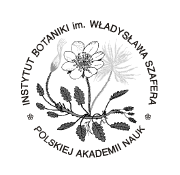 INSTYTUT CHEMII FIZYCZNEJ PAN
INSTYTUT CHEMII FIZYCZNEJ PAN
 INSTYTUT CHEMII ORGANICZNEJ PAN
INSTYTUT CHEMII ORGANICZNEJ PAN
 INSTYTUT FILOZOFII I SOCJOLOGII PAN
INSTYTUT FILOZOFII I SOCJOLOGII PAN
 INSTYTUT GEOGRAFII I PRZESTRZENNEGO ZAGOSPODAROWANIA PAN
INSTYTUT GEOGRAFII I PRZESTRZENNEGO ZAGOSPODAROWANIA PAN
 INSTYTUT HISTORII im. TADEUSZA MANTEUFFLA POLSKIEJ AKADEMII NAUK
INSTYTUT HISTORII im. TADEUSZA MANTEUFFLA POLSKIEJ AKADEMII NAUK
 INSTYTUT JĘZYKA POLSKIEGO POLSKIEJ AKADEMII NAUK
INSTYTUT JĘZYKA POLSKIEGO POLSKIEJ AKADEMII NAUK
 INSTYTUT MATEMATYCZNY PAN
INSTYTUT MATEMATYCZNY PAN
 INSTYTUT MEDYCYNY DOŚWIADCZALNEJ I KLINICZNEJ IM.MIROSŁAWA MOSSAKOWSKIEGO POLSKIEJ AKADEMII NAUK
INSTYTUT MEDYCYNY DOŚWIADCZALNEJ I KLINICZNEJ IM.MIROSŁAWA MOSSAKOWSKIEGO POLSKIEJ AKADEMII NAUK
 INSTYTUT PODSTAWOWYCH PROBLEMÓW TECHNIKI PAN
INSTYTUT PODSTAWOWYCH PROBLEMÓW TECHNIKI PAN
 INSTYTUT SLAWISTYKI PAN
INSTYTUT SLAWISTYKI PAN
 SIEĆ BADAWCZA ŁUKASIEWICZ - INSTYTUT TECHNOLOGII MATERIAŁÓW ELEKTRONICZNYCH
SIEĆ BADAWCZA ŁUKASIEWICZ - INSTYTUT TECHNOLOGII MATERIAŁÓW ELEKTRONICZNYCH
 MUZEUM I INSTYTUT ZOOLOGII POLSKIEJ AKADEMII NAUK
MUZEUM I INSTYTUT ZOOLOGII POLSKIEJ AKADEMII NAUK
 INSTYTUT BADAŃ SYSTEMOWYCH PAN
INSTYTUT BADAŃ SYSTEMOWYCH PAN
 INSTYTUT BOTANIKI IM. WŁADYSŁAWA SZAFERA POLSKIEJ AKADEMII NAUK
INSTYTUT BOTANIKI IM. WŁADYSŁAWA SZAFERA POLSKIEJ AKADEMII NAUK











